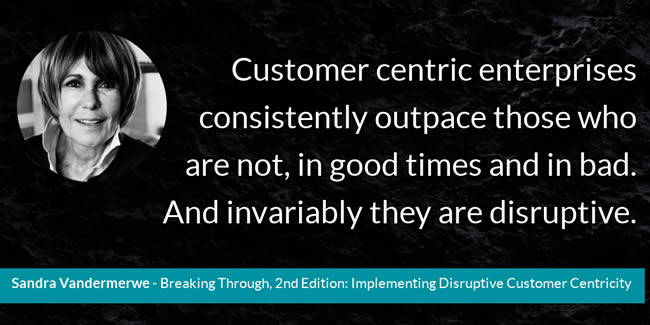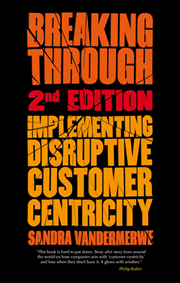
The title of this blog post is a promise. The blog delivers upon that promise. This is what you need to know (as in must know) about digital transformation and disruption.
In our recent interview on disruption, digital transformation, and leadership, Charlene Li said something about disruption that totally covers the essence of it in our view.
Narrowing it down even more and beyond the context of digital transformation strategy where all too often there is this hyped focus on the disruptive effect of technologies (which doesn’t necessarily mean there is no such thing as disruptive technology), what Charlene said is a matter of two elements: 1) shifts or change and 2) people. We foresee a third one: trust.
Let’s narrow it even further down and look deeper into transformation.

Change, disruption and resistance
The essence of change or transformation is about people. This is stating the obvious. Although change/transformation is not a human phenomenon alone, on the contrary.
Change is part “natural” (in our lives). We grow up and sometimes decide not to fully grow up. Another part of change and transformation, both in private life and business is not natural, it is forced upon us by context or the result of a deliberate or unconscious decision.
Deciding or being forced to change can be extremely hard and can be the result of extremely strong reasons. Very often these reasons are crises. In personal life, for instance, relationship crises or psychological problems. In business, for instance, macro-economic crises or a steep increase in customer churn. It is easier to resist change. At least, so it tends to seem. The energy of resisting change, often for reasons we totally ignore, forgot or simply don’t see or decide not to see can far outweigh the benefits of change and the surprise of what is unknown or partially known and in reality often does.
Resistance to change keeps the status quo alive, even if it’s destructive.
Change is a constant and at the same time dynamic. It disrupts each status quo. Resistance to change is also a constant unless decided or forced otherwise. It keeps the status quo alive, even if it’s destructive. Disruption, if not leading to change, leads to destruction just as creative destruction can lead to change.
Disruption and the disruptive effect of customers and customer-centricity
In business, the core disruptive and transformative force is human. People. Whom we call the customer. Or the prospective customer. Customers disrupt. Businesses are disrupted.
However, businesses can also disrupt. As disruption needs people and businesses are the sum of the people within their ecosystem, even if products and brand matter. If the essential people shaping the way they operate resist change when disrupted or ignoring the changes within the ecosystem, they fail. If smart innovators understand what people want and what technologies enable in a holistic perspective they can make their organizations disruptive.
Customer-centric organizations focus on customers. They adapt and pro-dapt. They have a culture, offering and organizational set-up that has the possibility to be embraced by customers, far more than other organizations. They understand the customer experience. Customer-centric organizations disrupt.
It is ironic that while the importance of customer-centricity is irrefutable, actually making it happen remains a conundrum for most executives and most implementations fail. A mere 5% of all organizations implement strategies successfully, 70% don’t, and the remaining 25% have some success, but never meet the intended potential of the vision (Professor Sandra Vandermerwe)
In 2000, Professor Sandra Vandermerwe wrote an article for the MITSloan Management Review. Here is a quote: “True customer focus means obtaining value for customers…as well as obtaining value from customers”. In 1974, she published her doctorate on “Influence of the Marketing Concept on Company Performance”. It looked at how the attitude of a CEO towards customers and the marketplace influences enterprise success.
In 1996 she published a book, “The Eleventh Commandment: Transforming to “Own” Customers” (John Wiley & Sons). Last year, Palgrave Macmillan published “Breaking Through 2nd Edition: Implementing Disruptive Customer Centricity“, also by Professor Sandra Vandermerwe.
A PDF with a book extract starts as follows: “Customer centric enterprises consistently outpace those who are not, in good times and in bad. And invariably they are disruptive”.
Disruption and fear of the unknown: not an excuse in business anymore
Read it (PDF opens), watch the diagram, think about customer-centricity, disruption, transformation and change. Then think about customers, CEOs and executives (leadership), change and resistance.
Add the dimension of technology. Finally, think about how the fear of the unknown, as it exists when challenged to change, shouldn’t apply to business in this day and age where far more is known than ever. So, deciding not to change as a business and be far more customer-centric is a deliberate choice or sign of weakness, lack of care, politics, ego, wrong budget allocation (e.g. too much focus on acquisition and not enough on retention/satisfaction, continuing to pump money into legacy systems that aren’t fit for the present and future instead of looking for more adapted ones) or lack of business and customer intelligence (among other possibilities).
You now understand the essence of digital transformation and the importance of customer-centricity. And you wonder why your organization hasn’t transformed around a disruptive customer yet or hasn’t become disruptive by being utterly customer-centric.
Disruption is your choice and responsibility
You now also have a choice. Or at least, you can’t deny you have one and always had one.
Even if making choices and change are hard. We can’t fully change as humans. But determinism is a choice, not a reality. Certainly not in business and towards customers. You can disrupt or be disrupted.
As the empowered customer rises to prominence, the uncaring organization climaxes (Gerry McGovern, The Caring Economy, Business Principles for the New Digital Age, 1999)
Here is the quote from the interview with Charlene Li mentioned in the beginning: “the thing that really causes disruption is the change in power and balance when shifts in value happen between individuals, between companies, between customers, within companies and inside ecosystems and the value chain”.
We would add one element of disruption to it: the change in trust between all these stakeholders. And by definition thus also reliability, relevance and value.


